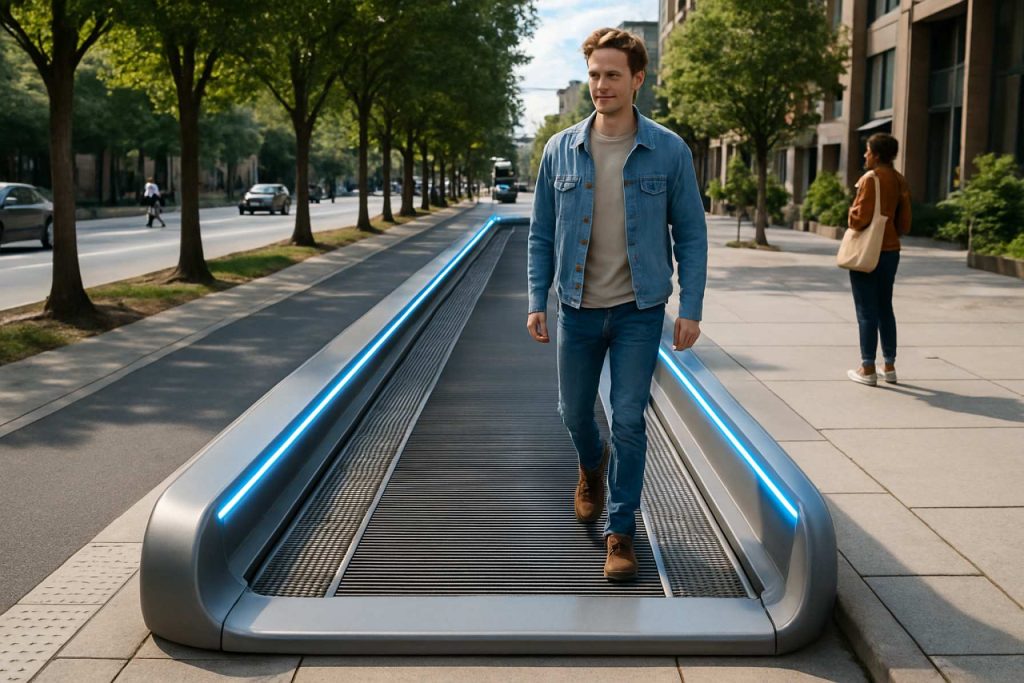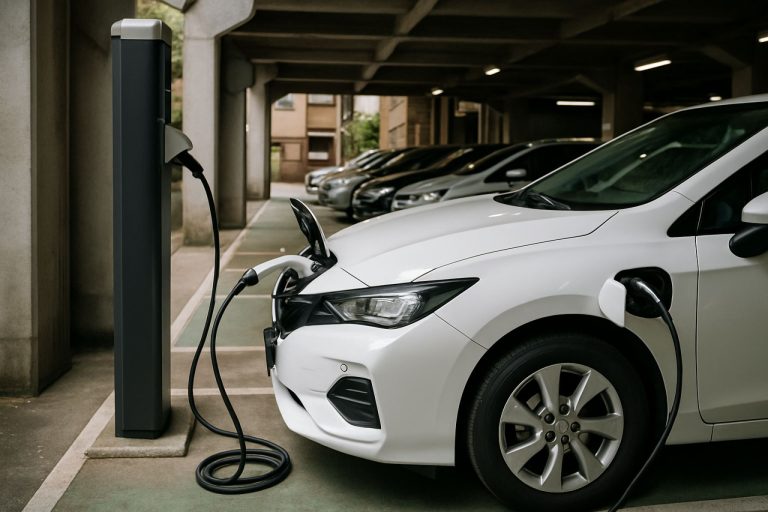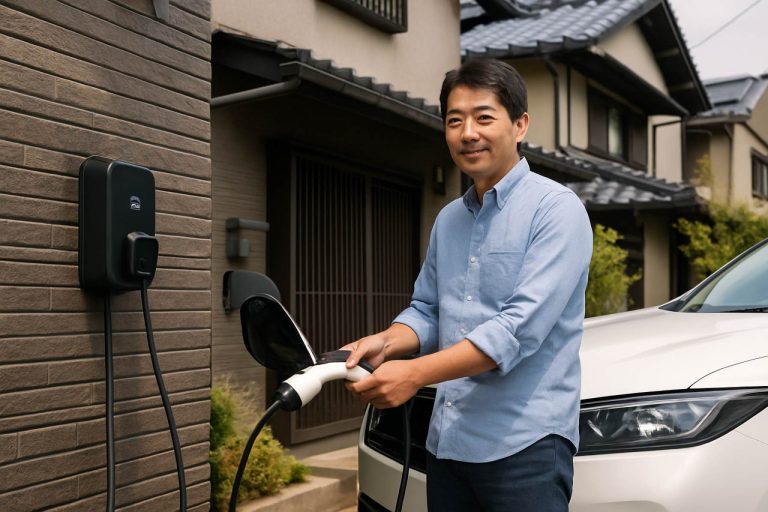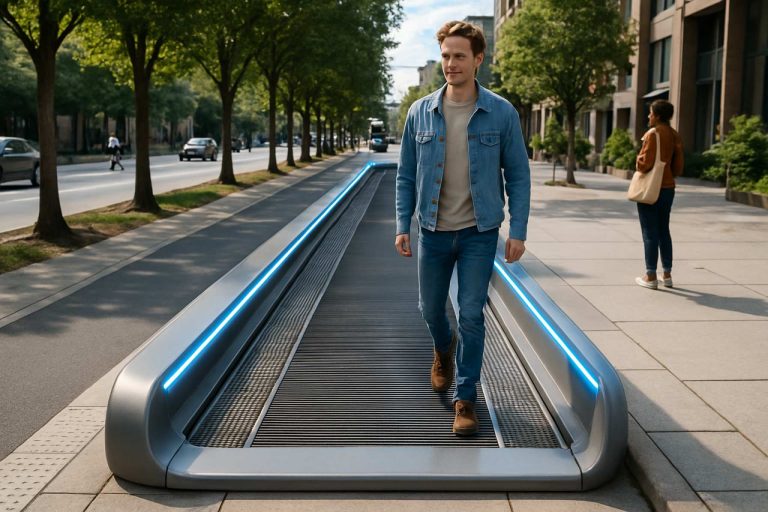
- The Curb Charger is a sleek, flush-mounted electric vehicle (EV) charger built directly into sidewalks, eliminating bulky charging stations and preserving valuable urban space.
- It delivers fast 22kW charging via a durable 400V three-phase connection, supporting quick and efficient battery top-ups for city commuters.
- Engineered for weather resilience, it features IP68 waterproofing, integrated drainage, and a heating system to ensure reliable operation year-round.
- Smart technology includes 4G, Ethernet, and RFID support for easy tap-and-charge use, plus app-based remote control for added driver convenience.
- The modular design allows swift maintenance, while requiring users to bring their own Type 2 cable, keeping sidewalks clutter-free and accessible.
The gentle buzz of an electric vehicle—one of urban life’s emerging soundtracks—often hums beside chunky, space-hogging chargers perched on poles or lurking like modern parking meters. That’s all about to change. In a move that might redefine urban landscapes, a little-known innovation is quietly reshaping how cities power the green revolution.
Rheinmetall, a name long associated with heavyweight machinery and Europe’s defense sector, surprises with a whisper-quiet entry into sustainable mobility. Their inventive answer for dense city streets: the Curb Charger, a streamlined, stainless-steel powerhouse built directly into the sidewalk. This device looks like nothing more than another stretch of curb—but beneath your feet flows enough current to energize the next wave of commuters.
Forget the everyday obstacles of traditional curbside chargers. The Curb Charger does away with the need for bulky support structures, preserving the full width of the sidewalk for the steady tide of strollers, dog walkers, and cyclists. It’s a modular, 80-kilogram slab that locks seamlessly in place, drawing up to 22kW through a robust 400V three-phase connection—an energy pulse that makes short work of topping up batteries.
Engineered for the reality of European weather, this charger is nothing if not resilient. With an IP68 waterproof rating, it shrugs off rain, melting snow, and even temporary submersion. Integrated drains keep internals dry, while a water-level sensor stands vigilant to cut power in emergencies. When winter bites, a hidden heating system melts away frost, guaranteeing unbroken access in the iciest months.
The tech running beneath the pavement equally impresses. 4G connectivity, Ethernet, and RFID scanning are onboard, enabling a tap-and-charge experience or remote control with a smartphone app. Drivers familiar with Europe’s bring-your-own-cable ethos won’t blink at needing their own Type 2 plug. In fact, this smart omission keeps the sidewalk clear, and maintenance hassle-free: if a charger acts up, a quick-release mechanism lets technicians swap modules with minimal fuss.
Practical trials have already proven its mettle. In the heart of Germany, four curb chargers braved sun, sleet, and rain, powering over 2,800 sessions with a sterling uptime above 99%. As more cities jostle for space and look to slash emissions, these flush-mounted chargers promise an elegant way to charge up while keeping urban life flowing.
The takeaway: City dwellers often shoulder the compromise between innovation and convenience. With these sidewalk chargers, the future looks far less cluttered. The next time you wander a car-lined avenue, take a closer look at the curb: it might just hold the power to keep your city moving cleaner and quicker.
Discover more about urban mobility and future city solutions at Rheinmetall and keep up with sustainable trends at BBC or Reuters.
Urban progress is often found where you least expect it—sometimes, right underfoot.
The Hidden Revolution: How Rheinmetall’s Curb Charger Could Change City Life Forever
Beyond the Buzz: What You Didn’t Know About Rheinmetall’s Sidewalk EV Charger
Rheinmetall’s Curb Charger isn’t just an attractive feat of engineering—it represents a critical leap forward in urban charging infrastructure. Here’s what the original article missed and what every city dweller, EV owner, and urban planner should know:
—
1. How-to: Using the Curb Charger – Effortless Charging in Three Steps
1. Park your EV parallel to a curb embedded with a Curb Charger.
2. Connect your own Type 2 cable (a standard across the EU) from your car to the charger slot.
3. Authenticate with an RFID-enabled card or use the dedicated smartphone app for instant power-up.
Tip: Keep your EV’s charging cable accessible and ready for public use. If you frequently park curbside, consider a short, weatherproof cable for convenience.
—
2. Real-World Use Cases & Compatibility
– Dense Urban Centers: The Curb Charger is ideal for historical cities or compact urban spaces where traditional charging stations clutter sidewalks.
– Retrofitting Existing Infrastructure: Perfect for upgrading existing curbside parking without disrupting accessibility or city aesthetics.
– EV Fleets & Delivery Services: Scaling this technology can allow companies to ‘charge while parked’ during routine downtown stops.
– Universal Appeal: Works with any Type 2-compatible EV—a standard across European models from VW, Renault, Mercedes, and even Tesla with the correct adapter.
—
3. Specs, Features & Pricing Overview
– Power: Up to 22kW AC (3-phase, 400V)—fast enough for many daily city commutes.
– Weight & Size: 80kg modular slab, designed for quick installation and replacement.
– Safety: IP68 waterproofing, auto shutoff on flooding, anti-slip surface, automatic frost melting.
– Connectivity: 4G, Ethernet, RFID, mobile app interface for billing, monitoring, and remote troubleshooting.
– Pricing: Estimated between €6,000–€10,000 per unit (2024 market average for advanced curbside chargers; citywide deployments may benefit from bulk rates).
—
4. Market Trends, Forecasts & Predictions
– Accelerated EV Adoption: By 2026, European EV sales are forecast to surpass 30% market share (source: European Automobile Manufacturers Association [ACEA]).
– Demand for Urban Charging: A McKinsey & Company report predicts Europe needs over 3 million public chargers by 2030 to meet zero-emission vehicle targets.
– City Regulations: Urban mandates for zero-emission zones are expected to drive even more demand for unobtrusive charging solutions like the Curb Charger.
—
5. Comparisons: Curb Charger vs. Traditional Curbside Favorites
| Feature | Curb Charger | Stand-Up Charger | Lamp Post Retrofit |
|—————————-|————————–|———————————-|——————————|
| Footprint | Flush with sidewalk | Bulky, obstructive | Minimal |
| Max Power Output | 22kW (AC, Fast) | 11–22kW (AC) | Typically 3.7–7.4kW (AC) |
| Weatherproofing | IP68, all-weather | Varies | Limited |
| Accessibility | Full sidewalk access | Partially blocks pathways | Depends on post placement |
| Maintenance | Modular, swap-in-place | Panel access required | Panel or column replacement |
—
6. Security, Sustainability & Limitations
– Security: RFID and app authentication help prevent unauthorized use; curb placement reduces tampering risks.
– Sustainability: Minimal urban disruption, allows infrastructure upgrades without concrete excavation, compatible with green energy grids.
– Limitations: Requires underground wiring, which may pose installation challenges in some historic districts; currently, the standard excludes DC fast charging.
—
7. Industry Buzz & Controversies
– Public Funding: Some critics debate the cost-effectiveness in smaller cities vs. fast-charging hubs ([Reuters](https://www.reuters.com)).
– Urban Equity: Ensuring these chargers are distributed equally (not just in affluent districts) is a growing concern, aligning with wider goals for transportation equity.
—
8. Pros & Cons Overview
Pros:
– Preserves sidewalk space.
– High weather-resistance.
– Fast charging capabilities (22kW).
– Easy maintenance and upgrades.
Cons:
– High upfront cost vs. slower charging lamp post retrofits.
– AC charging may not suit long-distance, high-capacity commercial vehicles.
– Availability currently concentrated in pilot projects within Germany.
—
9. Actionable Recommendations & Quick Tips
– Cities: Prioritize Curb Charger deployment in high-density areas where space and aesthetics are at a premium.
– EV Owners: Ensure your vehicle and charging cable are Type 2 compatible and register for RFID access.
– Urban Planners: Coordinate with energy utilities early for grid integration and consider combining Curb Chargers with other smart-city sensors.
– Homeowner Associations: Lobby for curbside upgrades to attract sustainable commuting options and boost property values.
—
10. Further Learning & Reliable Resources
Discover more about Rheinmetall’s innovation at their official platform Rheinmetall and follow industry-wide trends at established outlets like BBC and Reuters.
—
Key Takeaway:
The future of clean, connected cities might just begin under your feet—with innovations like Rheinmetall’s Curb Charger leading the way. For city planners, EV commuters, and sustainability advocates, this is a quiet revolution worth championing.
—
Quick Tip: Next time you walk your city’s pavements, look for new infrastructure upgrades—a flush-mounted square could soon be powering more than meets the eye.



